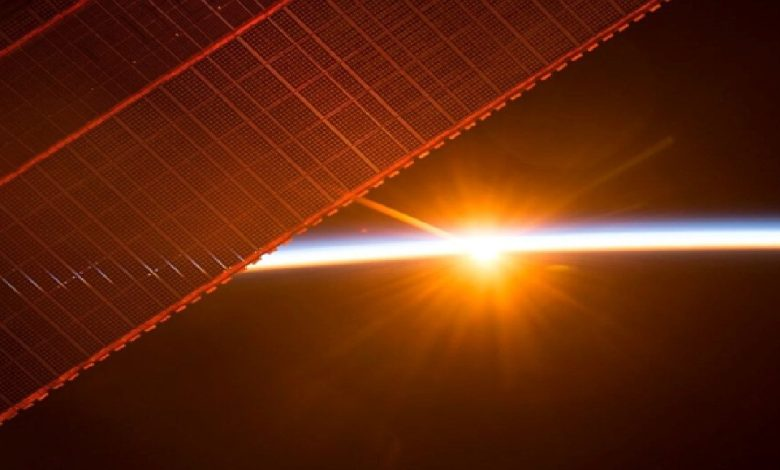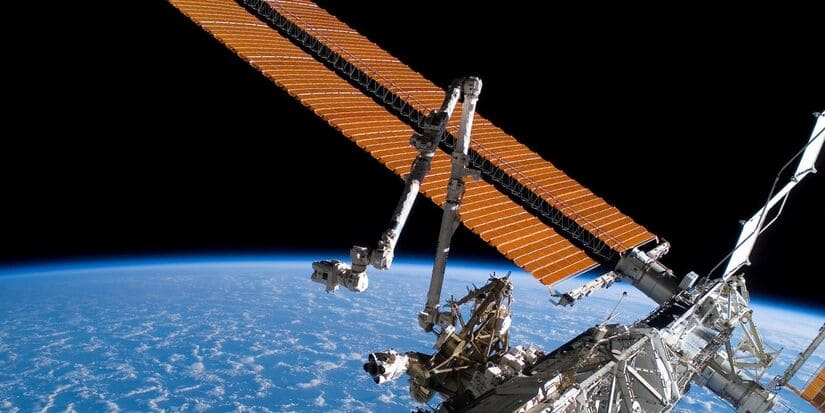Britain is studying a pioneering project to generate energy in space
Day after day, technologies for energy production are developing, and it is no longer confined to Earth, but also to the possibility of generating electricity in space, through the use of solar power plants.
At first glance, generating electricity in space by setting up a solar power plant may seem like a fantasy, but now it is not.
Perhaps the idea was a kind of science fiction in the past, as the dean of science fiction, the American writer Isaac Asimov, described a world in which humans harvested solar energy from space, according to his short story “Reson” in 1941.
Back then, Isaac Asimov imagined that giant solar panels, orbiting the Earth, sent renewable energy via radio waves.
Now, 80 years later, Asimov's vision of electricity generation in the district may become a reality, according to Energy Monitor website published on May 26.
The British government is considering a 16 billion pound ($20.18 billion) project to put a solar power plant in space.
space solar energy
In March 2022, British Science Minister George Freeman revealed that the government was considering a £16 billion ($20.11 billion) proposal to generate electricity in space, using space solar power which is one of the technologies in the government's innovation portfolio Net Zero".
The British company Fraser Nash, the engineering solutions, systems and innovative technology company, estimates that there is space in orbit for solar energy satellites to provide more than 100% of the expected energy requirements in the world .
A recent report by Fraser Nash for British authorities described space solar power as "clear, abundant and technically feasible" by 2040, and a US analysis in November 2021 described it as an additional technology available to deal with local weather change.
The US military harnesses solar energy in space - archive
Abundant solar energy around the clock
The electricity generation system in space is represented by a huge spacecraft equipped with a spread array of solar panels.
Electricity is generated in space by solar panels, and then transmitted wirelessly to Earth using high-frequency radio waves.
Upon reception, a ground antenna, a 'rectifier', is used to convert radio waves into electricity, which is then transmitted to the power grid.
The power plant from space is illuminated by the sun from solar energy in orbit 24 hours a day, and electricity is produced continuously.
The feature is a clear advantage over land-based renewable energies, which only generate electricity when the wind blows and the sun shines.
Electricity demand
With global energy demand expected to increase by about 50% by 2050, generating electricity in space could be key to helping meet the world's growing energy sector demand and address global warming, notes the chair of mechanical and design engineering at the University of Portsmouth. , Jovana Radulovich.
And while it's not a new technology, recent outstanding achievements have brought the generation of electricity in space through the solar station closer to reality.
Until the last decade, space-based solar power generation was overlooked as uneconomic, mainly because of the prohibitive cost, said Martin Soltau, Fraser Nash's space business manager and head of the Space Energy Initiative (SEI) in Britain. to launch satellites.
He added that a radical change occurred when the US company Space Exploration Technologies offered reusable missiles and the cost of launching was reduced by 90%.
Some of the latest satellite designs for solar panels are modular redundant units - thus suitable for mass manufacturing - significantly reducing the cost of hardware, as related technologies such as autonomous robots and assembly in space have advanced dramatically.
All of this goes beyond the growing insistence on achieving carbon neutrality and the realization that it will be very difficult to achieve with current technologies, Soltau explained.
He pointed out that the accumulation of all these problems together at the same time, caused a renewed interest in generating electricity in space through solar energy.
ULTIMATE CLEAN ENERGY
Space-based solar is one of the ultimate clean energy technologies, with space in orbit for solar-powered satellites to provide more than 100% of the world's projected energy requirements in 2050, according to a Fraser Nash report.
Electricity generation technologies in space will combine with intermittent technologies such as wind and terrestrial solar energy because they are distributable - in other words, they can respond quickly to the changing demand caused by the changing production of intermittent energy sources.
An in-space solar power plant would have a relatively small environmental impact, as Fraser Nash expects its on-ground infrastructure to occupy just 8% of the area of a conventional wind farm for the same production, and could also be moored offshore.
The £12.75 billion ($16 billion) Casio PA Solar Satellite is a prototype solar satellite design developed by British engineering firm International Electric that uses concentrated solar technology.
This means that the model needs one-6,000th of the PV area of a ground-based solar farm.
A recent life-cycle assessment of a space power plant from solar energy, conducted by the University of Strathclyde in Scotland, indicated that the plant has a carbon footprint of 24 grams of carbon dioxide per kilowatt-hour, which is half that of terrestrial solar energy. .
According to Fraser Nash, the station will be relatively safe; It will provide coded upward guidance and precise orientation for the solar panels, and the radio wave beam will peak at a quarter the intensity of the midday sun.
And Fraser Nash predicted a flat electricity cost of £26 per megawatt-hour, about a third of the cost of nuclear power and cheaper than both wind and solar power.
A group of industrialized nations are exploring the potential of the technology, and the Space Solar Power project, in the United States, is working to develop highly efficient solar cells as well as an optimized electricity conversion and transmission system for use in space.
In turn, the US Naval Research Laboratory tested a solar module and energy conversion system in space in 2020.
The US military has developed "sandwich units", which are one of the basic components of solar energy satellites, said Martin Soltau, director of space business at Fraser Nash, head of the Space Energy Initiative (SEI) in Britain, adding that the US military completed the energy beam shows. Up to 1 kW and at a distance of one mile.
For its part, China recently announced progress in its Bishan space solar power station, and aims to have a working system by 2035.
Chinese researchers have designed a system called Omega, which should be able to provide 2 gigawatts of electricity to the country's grid by 2050.
The Japan Space Agency is working on the design of a space-based solar energy system, and plans to demonstrate beam steering from space for 2025.
Japan is likely to be the world leader in electric wave routing, thanks to a government-led program and a stated national technology development policy.
space project finance
The European Space Agency is looking to fund electricity generation projects in space through space solar power plants, and in Britain, a proposed £16 billion space power system has been considered a viable concept based on recent Fraser Nash research.
When the project is docked, it is expected to start with small trials, with the goal of creating an operational space solar power plant in 2040.
The operating assumption is that Britain will have 15 solar satellites by 2050, each providing 2 gigawatts to the grid, Seltau said.
Given the high initial costs and slow return on investment, the project will require significant government resources as well as investment from private companies, said Jovana Radulovic, lecturer at the University of Portsmouth.
Source: Energy
https://shahbapress.net/archives/25116?fbclid=IwAR2Z43pTv0asKcO4107IRxq2--rVyzHzgvxqH6BscmcVnhpy2e0c3qhGAgc



